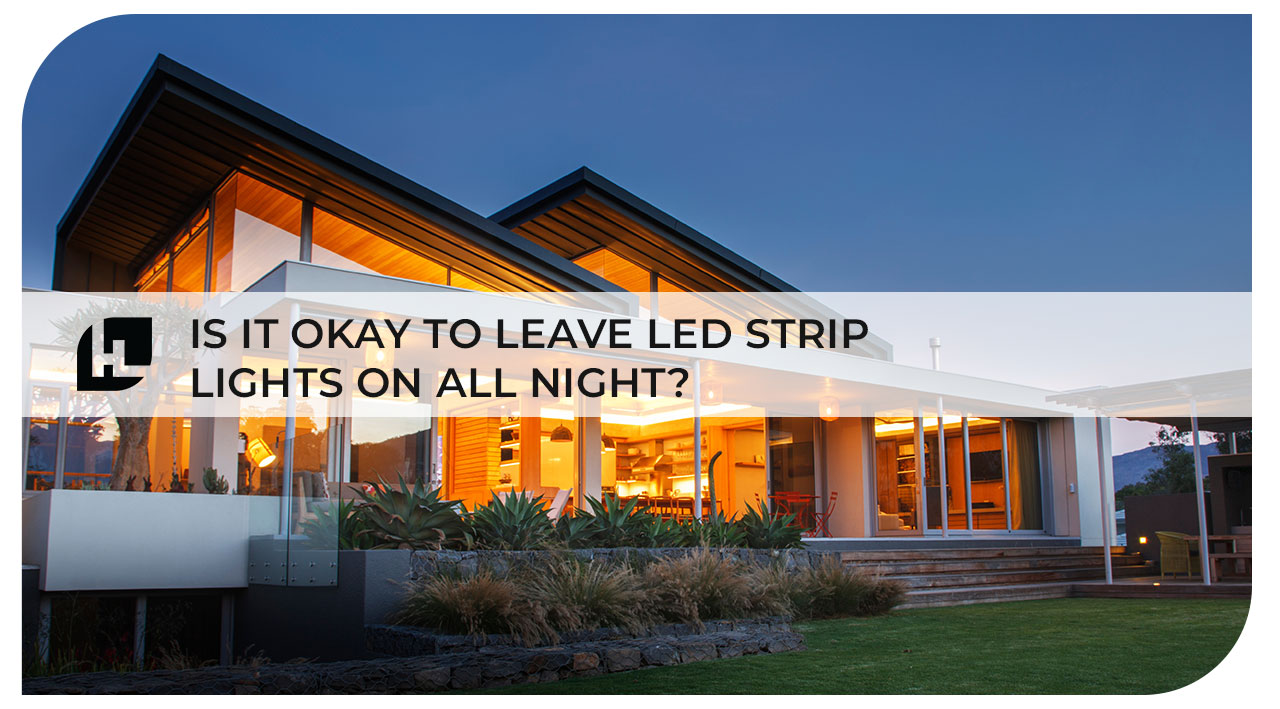Is it okay to leave LED strip lights on all night?
Introduction
LED strip lights are a great way to improve the look of your home or office. They're easier to install than traditional incandescent bulbs and can last for years without needing to be replaced. However, there are some things you should keep in mind when thinking about leaving your LED light strips on all night:
The answer is yes.
LED lights are energy efficient. LED lights use less electricity and last longer than traditional light bulbs. They also create less heat, which means they don't need as much cooling equipment in your home or business.
LEDs are more durable than incandescent bulbs because they can be made from materials that are both flexible and shatter-proof (like glass or plastic). This makes them more resistant to breakage when dropped on the floor or hit with a hammer—and it also means that you'll have fewer replacement costs! In addition to being more durable, LED light strips last longer than regular incandescent ones do: A study done by Philips found that an LED strip's lifespan could last up to 20 years if properly cared for over time."
Generally speaking, the best thing to do is leave your lights on all night, because it will save you money in the long run and may even help with your energy bill.
LEDs are more energy efficient than incandescent lights. They use less power to produce the same amount of light as an incandescent bulb. The fact that they last longer also helps keep your electricity bill down because they don’t need replacing as often or frequently compared with an incandescent bulb—you can usually get up to 25 years out of an LED light!
Energy efficiency remains
Most LED light strips are not super bright enough to replace high-pressure sodium bulbs.
Most LED light strips are not super bright enough to replace high-pressure sodium bulbs.
LEDs have a lower lumen output than incandescent bulbs and fluorescent lights, so they don't put out as much light. The National Electrical Code (NEC) limits the number of lumens that can be emitted from each watt of power used for lighting purposes. The NEC also specifies minimum brightness levels for different types of lights, which vary by country and state law. In general, you'll find that LED strip lights are typically less than half as bright as an incandescent bulb or fluorescent equivalent in terms of overall luminous flux (the amount of visible light emitted).
If you're thinking about replacing incandescent lights with LED finish or daylight LEDs, consider that new LEDs use more energy than older ones.
If you’re thinking about replacing incandescent lights with LED finish or daylight LEDs, consider that new LEDs use more energy than older ones. A regular fixture uses about the same amount of electricity as an incandescent light bulb but it requires much less energy to make and operate.
If your home is old and uses a lot of electricity, replacing all your bulbs with LEDs may not be worth it if they cost more than what they save in overall operating costs. In addition to this consideration, there are also environmental factors that need to be considered when installing LED lighting:
- The heat generated by Fluorescent Lamps (FLs) is caused by mercury vapor being emitted from their glass tubes during operation; this makes them inefficient compared with other forms of illumination such as Compact Fluorescent Lamps (CFLs) which produce less heat while still providing excellent light quality at a fraction of their price tag!
You can leave your LED strip lights on all night if they're not too bright and they'll help save you money on electricity bills over time and cut down on CO2 emissions.
LED lights are more efficient than incandescent and fluorescent lights. LEDs have a higher energy efficiency rating than CFLs, which means that they use less electricity to produce the same amount of light output. A typical LED bulb will last up to 50,000 hours (that’s 8 years), while an incandescent bulb lasts only 1,000 hours on average. On top of this, LEDs don't emit heat like CFLs do—so they won't heat up your home or apartment building as much as traditional bulbs would. They also cost less in terms of manufacturing costs; because there are fewer parts involved in making an LED light than there are for traditional ones, manufacturers can get them for less money without sacrificing quality or reliability (which makes sense given how much more efficient these products are).
Finally: If you're thinking about switching over from incandescent bulbs to LEDs but aren't sure where begin with replacing all your lights at once? Don't worry! We've got some helpful tips below on how best way get started reducing CO2 emissions from each room by using low-energy alternatives such as compact fluorescent lamps (CFL) instead."
Conclusion
There’s no reason not to leave your LED strip lights on all night, as long as they’re not too bright and you don’t have any neighbors who complain about the noise. If these things are important to you, then by all means keep them on for 24/7!

